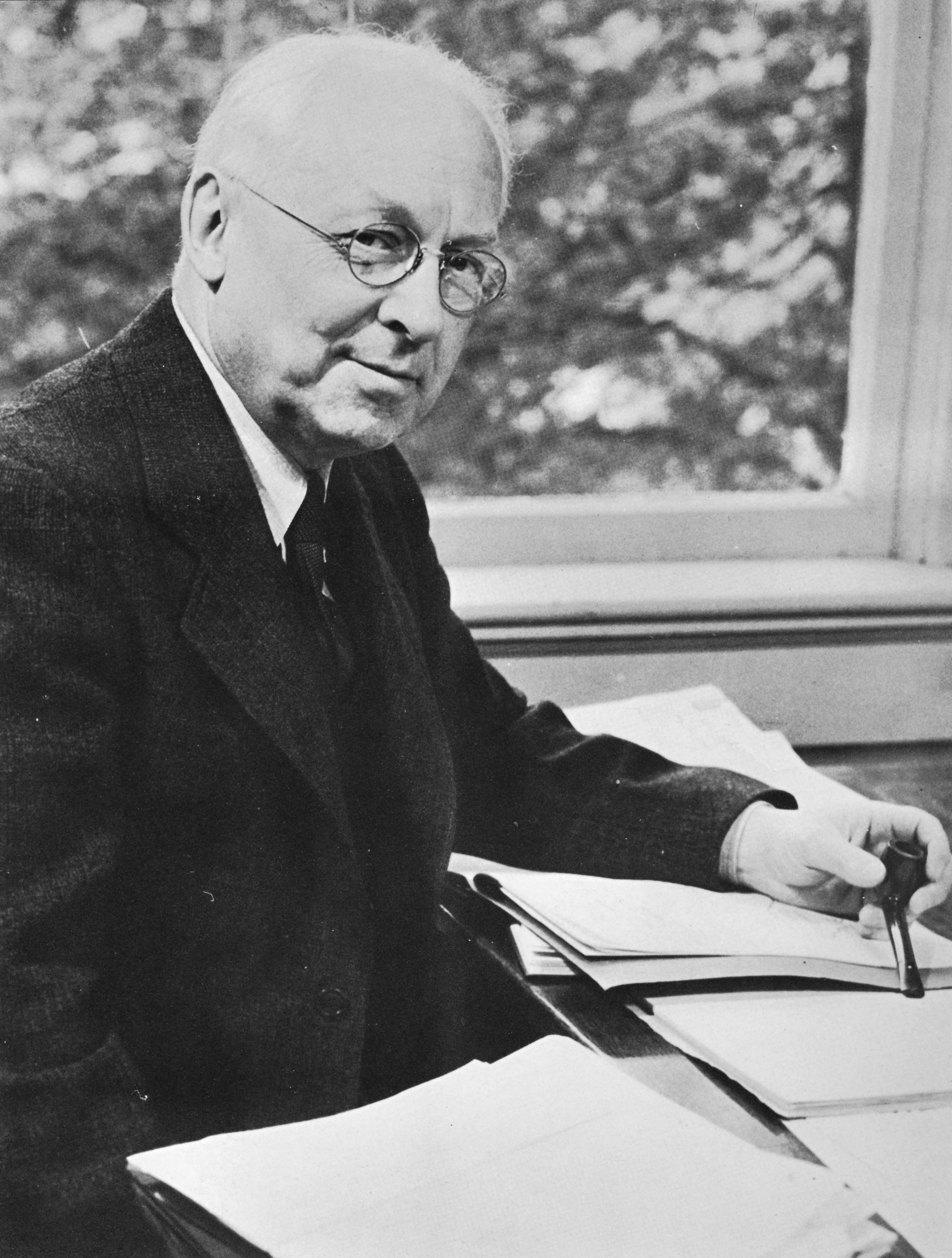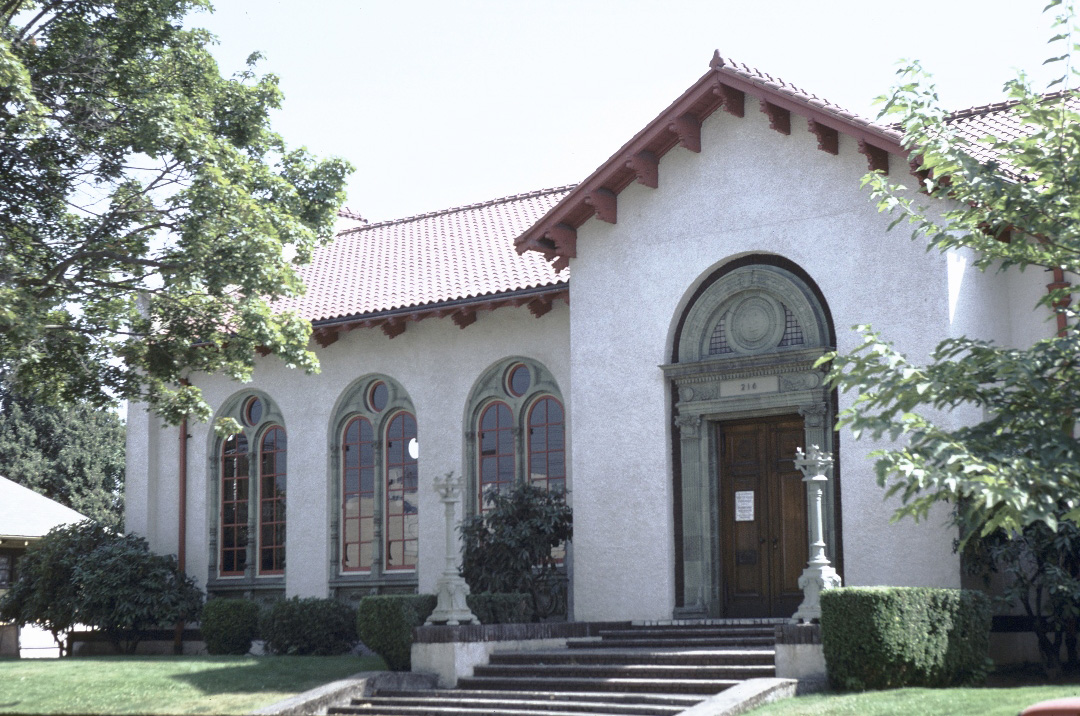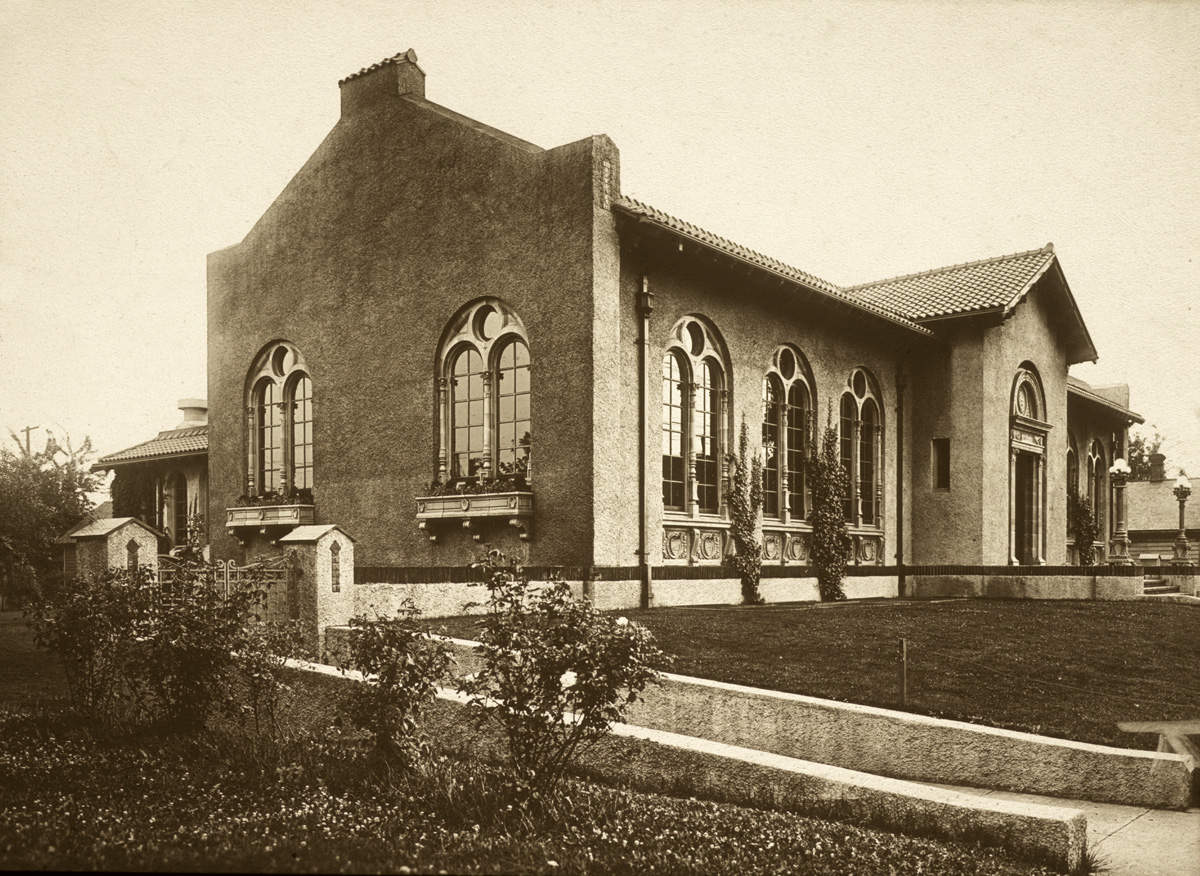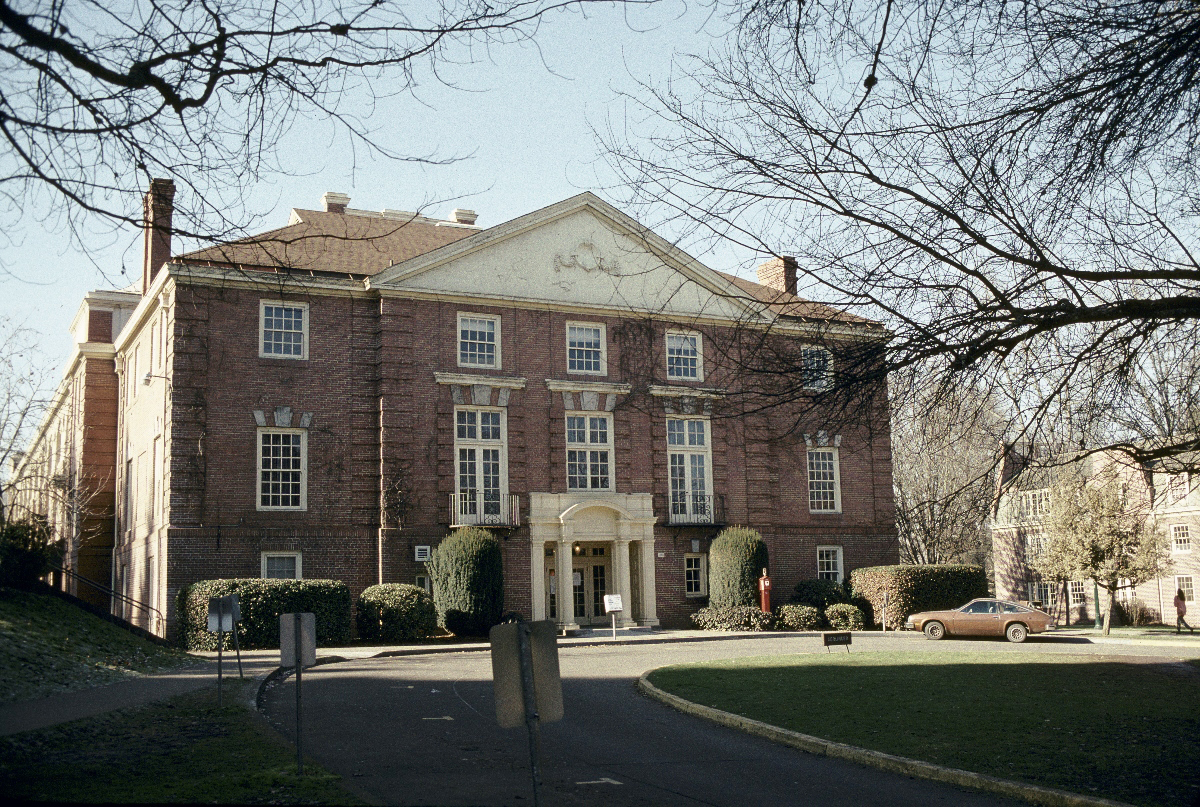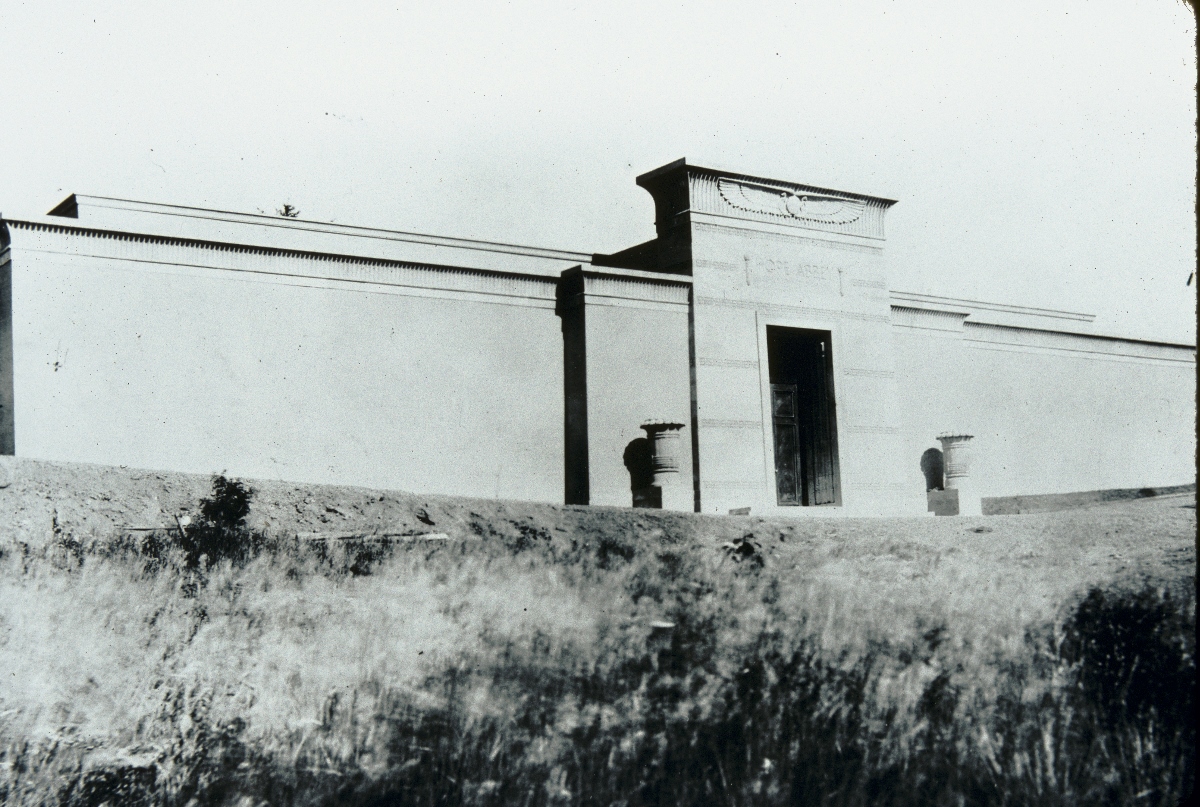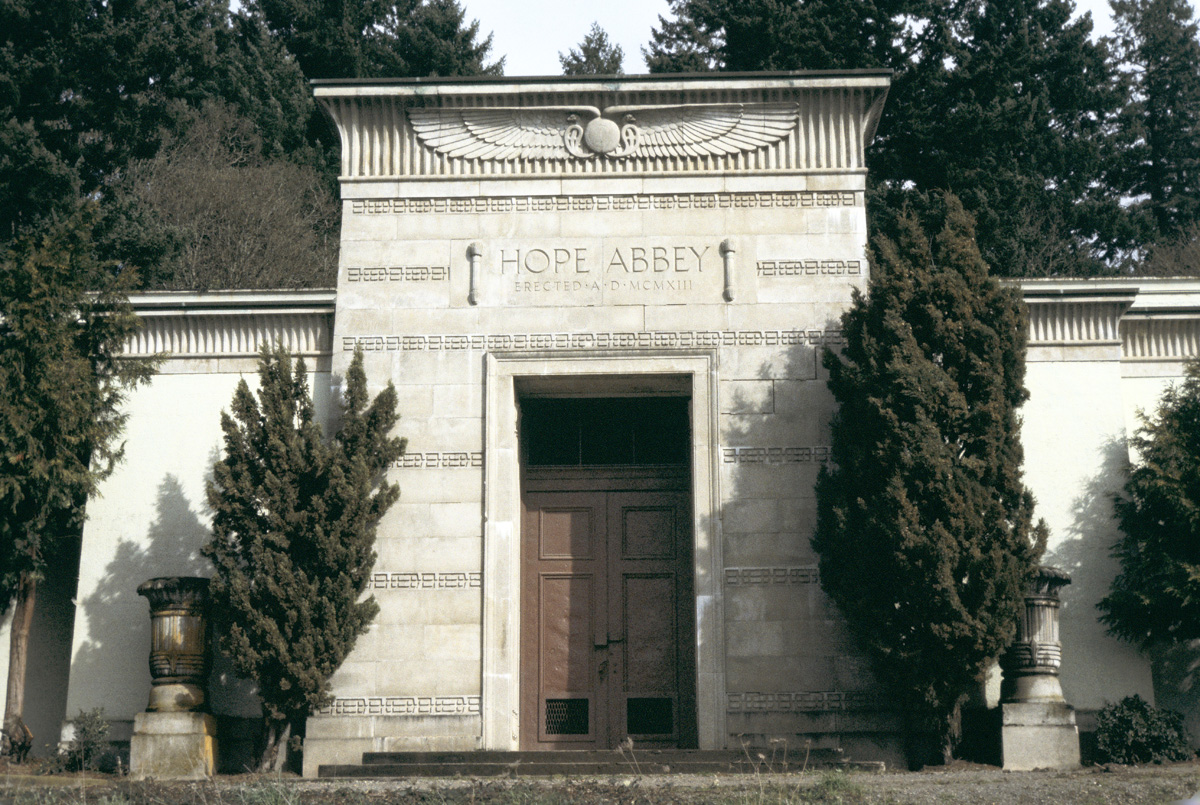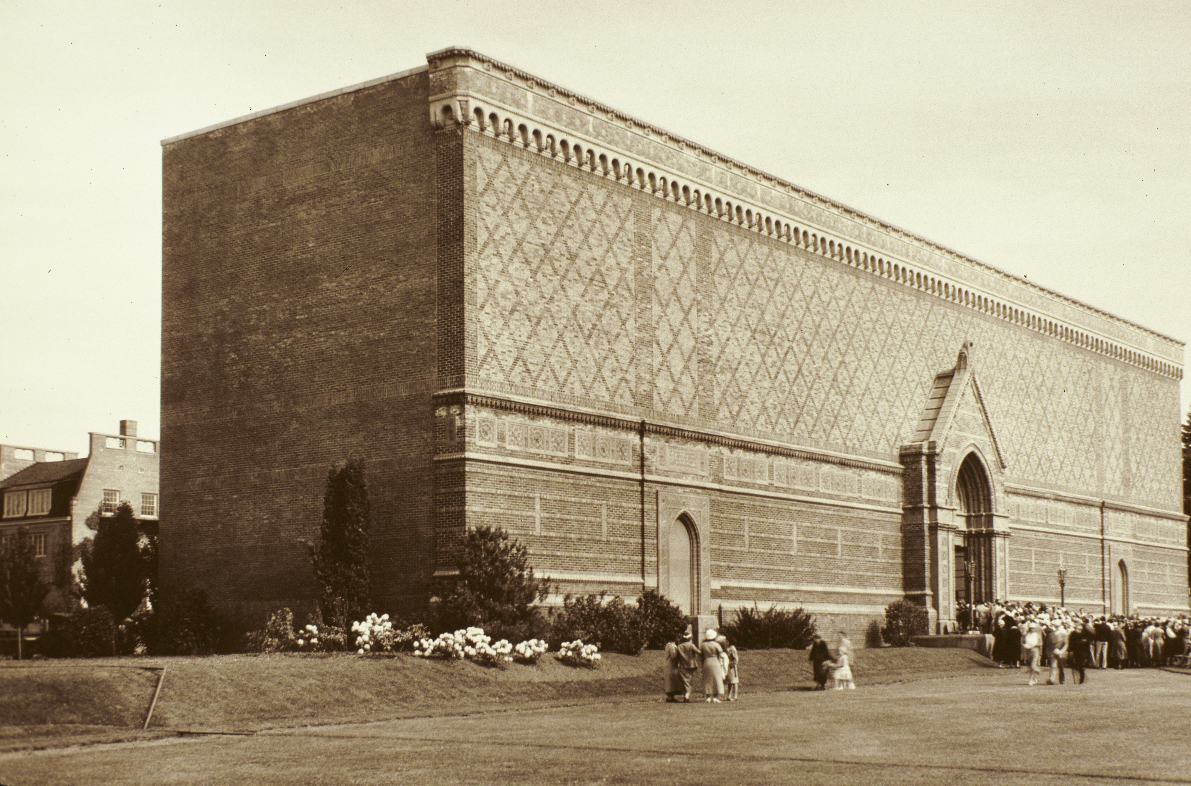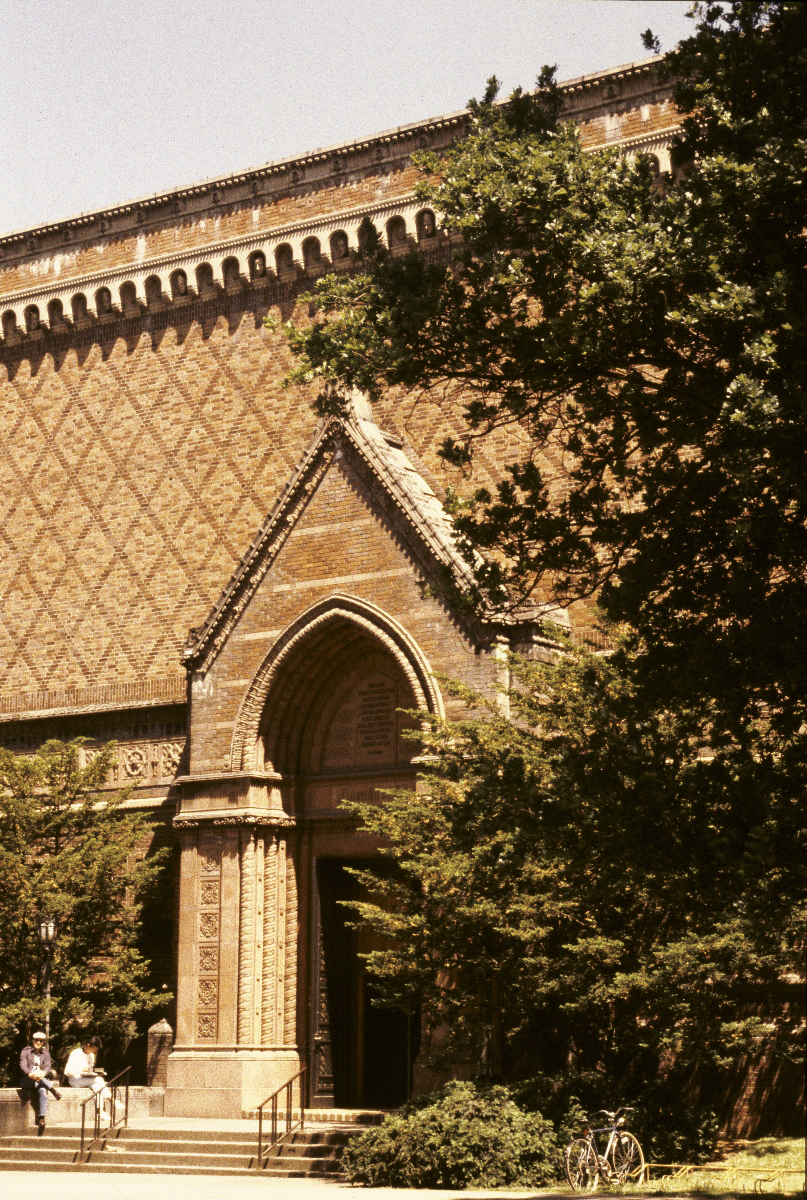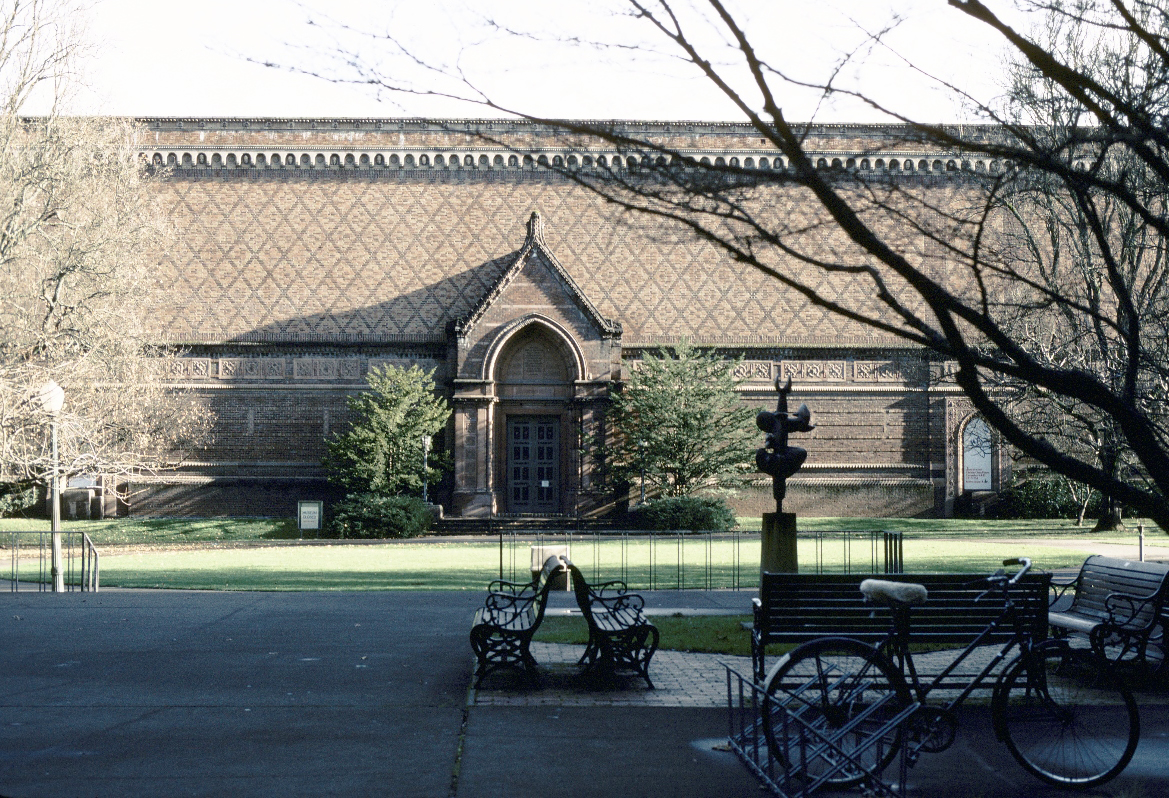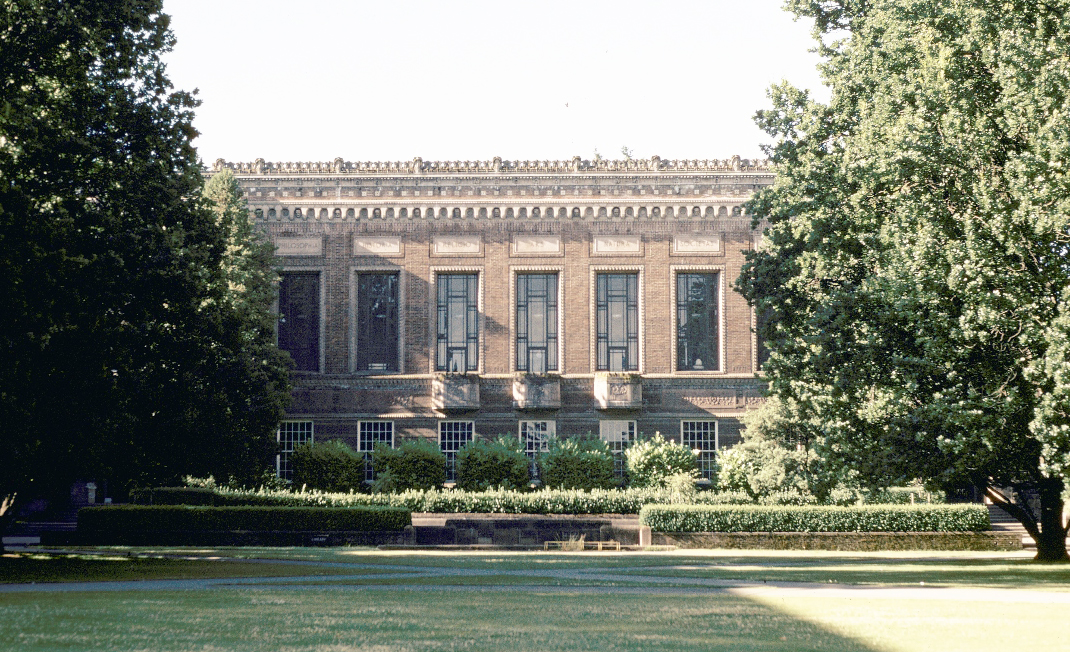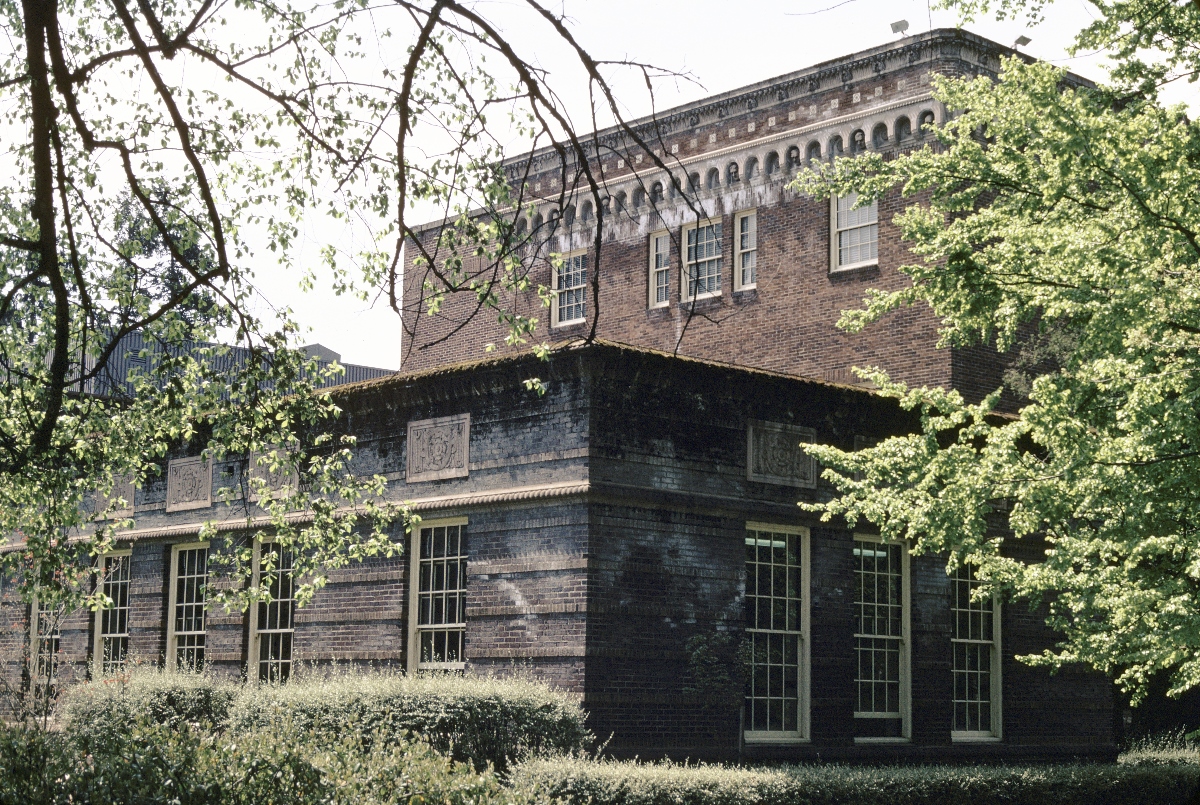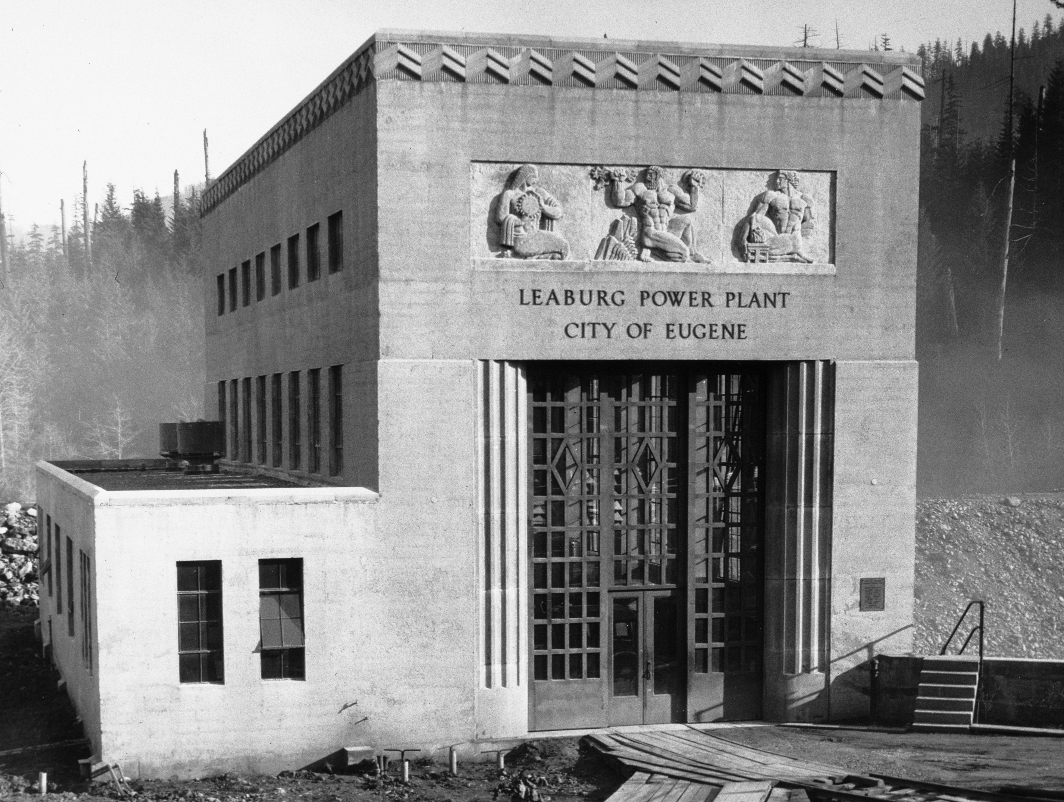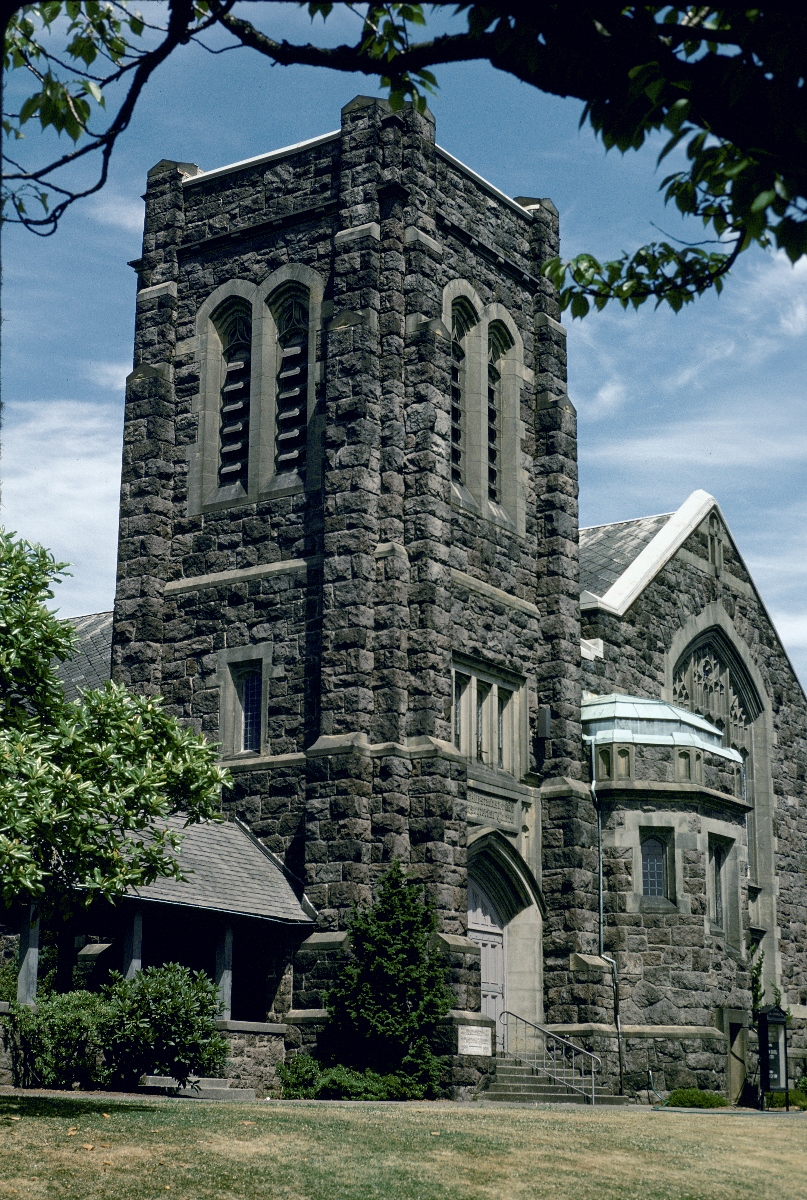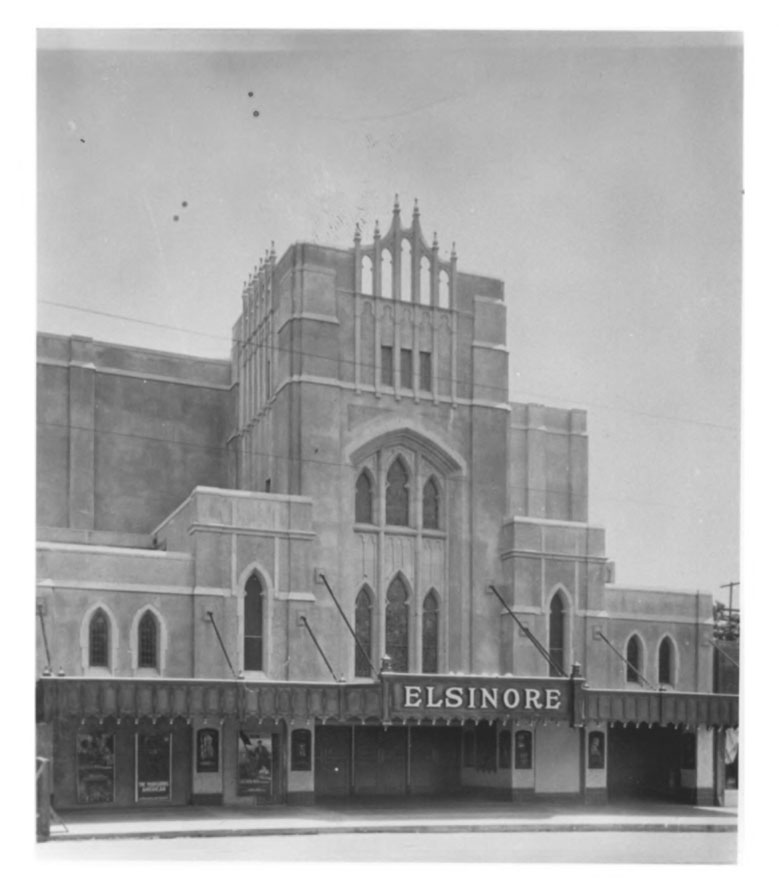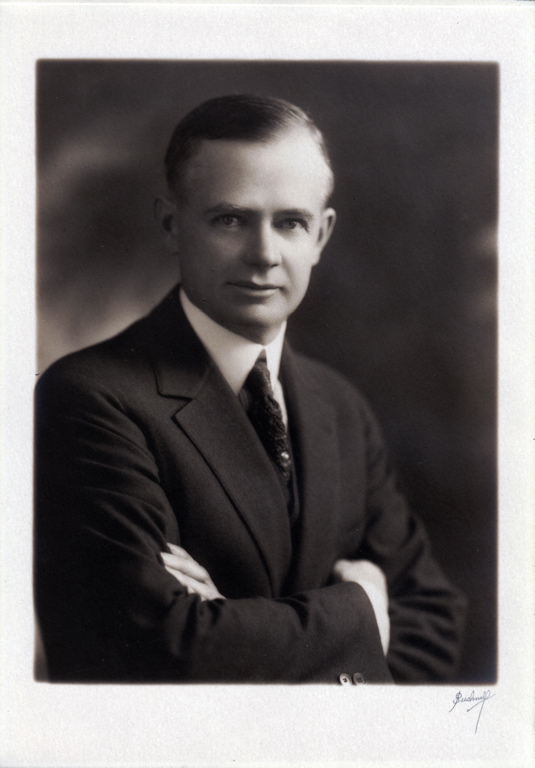Portland architect Ellis Fuller Lawrence was the leading organizer of his profession in Oregon in the early years of the twentieth century. Although he maintained an active practice independently and had several associates and partners over forty years, it was the architect’s zeal for advancing the profession through architectural education that completed his legacy.
As founder and first dean of the School of Architecture and Allied Arts at the University of Oregon, from 1914 until his death in 1946, Lawrence shaped a professional school that was noted for its pioneering break with the universal academic model, the École des Beaux Arts in Paris, and its competition-based method of instruction. The Lawrence Medal, the School’s highest recognition for distinguished alumni, was created in his honor in 2000.
Born in Malden, Massachusetts, in 1879, Lawrence received his bachelor’s and master’s degrees in architecture at the Massachusetts Institute of Technology (MIT). After graduating in 1902, he was an apprentice with firms in Boston and Portland, Maine, including Codman & Despradelle, Peabody & Stearns, and John Calvin Stevens. Following eight months of travel and study in Europe, Lawrence came to the West Coast and settled in Portland in 1906. He was briefly associated with Edgar Lazarus before entering into partnership with his MIT classmate E.B. MacNaughton.
The firm of MacNaughton, Raymond & Lawrence was succeeded by Lawrence's long-lasting partnership with William G. Holford. The partnership was formed by 1913 and eventually expanded to become Lawrence, Holford, Allyn & Bean. The culminating partnership of the architect’s career was formed in 1944 with his son H. Abbott Lawrence, who had worked in his father’s office in the 1930s.
Of the more than five hundred projects attributed to Lawrence and his associates, 40 percent were residential works in Arts and Crafts, Colonial Revival, and varied historic period styles. Some of his later work, including public buildings and commercial and industrial projects, took on a modern sensibility.
The architect was well known for his activism in the public interest. He organized Portland’s Builders Exchange in 1911 to promote cooperation among architects and building tradesmen. In 1921, Lawrence organized the Oregon Builders Congress, a coalition of architects, contractors, and suppliers that approved a code of ethics and promoted legislation for a court of arbitration to settle labor disputes. He was a key promoter of municipal planning in Portland.
From the earliest years of his practice, Lawrence acted on his belief in the importance of mutual support and training. In 1906, he helped form the Portland Architectural Club and was an early president. He led the first convention of architects on the West Coast in Portland in 1909 and successfully proposed its outgrowth, the Architectural League of the Pacific Coast. In 1909, he was elected patron (master) of the Portland Architectural Club’s Society of Beaux Arts Architects atelier (studio), which provided the first formal instruction for younger draftsmen at a time when state-sponsored architectural education did not exist in Oregon.
Lawrence was a founder and first president of the Oregon Chapter of the American Institute of Architects, chartered in 1911. He saw to it that the AIA’s rules to uphold fairness in the conduct of design competitions were applied in public projects. In recognition of his public spirit, he was elected to the AIA College of Fellows in 1913. With the creation of an architecture degree program at the University of Oregon in 1914 and passage of the Oregon Architects’ Registration Law in 1919, the framework for ensuring professional development and standards that Lawrence and his colleagues had advocated was complete.
Lawrence brought characteristic drive to his combined roles as campus architect and dean of the University of Oregon School of Architecture and Allied Arts. He commuted by rail once a week from his home and practice in Portland to Eugene, where he taught studio courses and city planning. He laid down an innovative structure for the school. By integrating education in architecture and the fine arts, he demonstrated the value of creative collaboration. His intentional drift away from the Beaux Arts academic model led to abandoning the old system in the 1920s in favor of a freer, more progressive approach that encouraged individuality and focused on practical problems.
The architect’s works on the University of Oregon campus include Gerlinger Hall and the Women’s Quadrangle (1917-1921), the Museum of Art (1930), and the library (1939). The Lawrence-designed architecture building, together with its early additions, was considerably enlarged by modern facilities and rededicated in 1958 as Lawrence Hall.
In Portland, the Albina Branch Library (1912), Westminster Presbyterian Church (1914), Riverview Cemetery caretaker’s house (1914), and the University of Oregon Medical School (1917-1922) were designed by Ellis Lawrence. In Salem, Lawrence and his associates designed the Masonic Temple (1912), Elsinore Theatre (1926), and the Thomas A. Livesley House (1924) today known as “Mahonia Hall,” the official residence of Oregon governors.
-
![Ellis F. Lawrence, 1942.]()
Lawrence, Ellis, portrait, 1942.
Ellis F. Lawrence, 1942. Copyright University of Oregon Libraries
-
![Albina Branch Library, 1980.]()
Albina Branch Library, Portland, exterior, 1980.
Albina Branch Library, 1980. Photo Marion Dean Ross, copyright University of Oregon Libraries
-
![Albina Branch, Multnomah County Library (built 1913), 216 NE Knott St., Portland.]()
Albina Branch Library, Portland, exterior, nd.
Albina Branch, Multnomah County Library (built 1913), 216 NE Knott St., Portland. Copyright University of Oregon Libraries
-
![Elsinore Theater (built 1926), 170 High St., Salem, July 1985.]()
Elsinore Theater, Salem, exterior, 1985.
Elsinore Theater (built 1926), 170 High St., Salem, July 1985. Photo Marion Dean Ross, copyright University of Oregon Libraries
-
![Elsinore Theater, 1986.]()
Elsinore Theater, Salem, exterior, 1986.
Elsinore Theater, 1986. Photo Michael E. Shellenbarger, copyright Oregon State Historic Preservation Office
-
![Gerlinger Hall, (built 1921), University of Oregon, 1468 University St., Eugene, Sep. 1974.]()
Gerlinger Hall, UO, Eugene, exterior, 1974.
Gerlinger Hall, (built 1921), University of Oregon, 1468 University St., Eugene, Sep. 1974. Copyright University of Oregon Libraries
-
![Gerlinger Hall, about 1989.]()
Gerlinger Hall, UO, Eugene, exterior, 1989.
Gerlinger Hall, about 1989. Photo Michael E. Shellenbarger, copyright University of Oregon Libraries
-
![Hope Abbey Mausoleum, (built 1913), Masonic Cemetery, 26th Ave. & University St., Eugene.]()
Hope Abbey Mausoleum, Eugene, exterior, nd.
Hope Abbey Mausoleum, (built 1913), Masonic Cemetery, 26th Ave. & University St., Eugene. Copyright University of Oregon Libraries
-
![Hope Abbey Mausoleum, 1980.]()
Hope Abbey Mausoleum, Eugene, exterior, 1980.
Hope Abbey Mausoleum, 1980. Copyright University of Oregon Libraries
-
![Jordan Schnitzer Museum of Art, University of Oregon, 1430 Johnson Ln., Eugene, 1930s.]()
Jordan Schnitzer Museum of Art, UO, Eugene, exterior, 1930s.
Jordan Schnitzer Museum of Art, University of Oregon, 1430 Johnson Ln., Eugene, 1930s. Photo Michael E. Shellenbarger, copyright University of Oregon Libraries
-
![Jordan Schnitzer Museum of Art, 1989.]()
Jordan Schnitzer Museum of Art, UO, Eugene, exterior, 1989.
Jordan Schnitzer Museum of Art, 1989. Photo Michael E. Shellenbarger, copyright University of Oregon Libraries
-
![Jordan Schnitzer Museum of Art.]()
Jordan Schnitzer Museum of Art, UO, Eugene, exterior, nd.
Jordan Schnitzer Museum of Art. Photo Michael E. Shellenbarger, copyright University of Oregon Libraries
-
![Knight Library (built 1939), University of Oregon, Eugene, July 1976.]()
Knight Library, UO, Eugene, exterior, 1976.
Knight Library (built 1939), University of Oregon, Eugene, July 1976. Photo Marion Dean Ross, copyright University of Oregon Libraries
-
![Knight Library, 1985.]()
Knight Library, UO, Eugene, exterior, 1985.
Knight Library, 1985. Photo Michael E. Shellenbarger, copyright University of Oregon Libraries
-
![Ellis Lawrence's architectural drawing of the Leaburg Power Plant, 1920s.]()
Leaburg Power Plant, exterior drawing, 1920s.
Ellis Lawrence's architectural drawing of the Leaburg Power Plant, 1920s. Leaburg Power Plant, exterior drawing, 1920s
-
![Leaburg Power Plant (built 1929).]()
Leaburg Power Plant, exterior, nd.
Leaburg Power Plant (built 1929). Photo Michael E. Shellenbarger, copyright University of Oregon Libraries
-
![Masonic Building (built 1913), 495 State St., Salem, May 1987.]()
Masonic Bldg, Salem, exterior, 1987.
Masonic Building (built 1913), 495 State St., Salem, May 1987. Photo Marion Dean Ross, copyright University of Oregon Libraries
-
![Detail of Masonic Building, Salem, Feb. 1966.]()
Masonic Bldg, Salem, exterior detail, 1966.
Detail of Masonic Building, Salem, Feb. 1966. Photo Marion Dean Ross, copyright University of Oregon Libraries
-
![Thomas A. Livesley House (aka, Mahonia Hall) (built 1924), the official Governor's residence, 533 Lincoln St., Salem, about 1989.]()
Thomas Livesley House, Salem, exterior, 1989.
Thomas A. Livesley House (aka, Mahonia Hall) (built 1924), the official Governor's residence, 533 Lincoln St., Salem, about 1989. Copyright University of Oregon Libraries
-
![Westminster Presbyterian Church (built 1914), 1624 NE Hancock St., Portland]()
Westminster Presbyterian, Portland, exterior, 1980.
Westminster Presbyterian Church (built 1914), 1624 NE Hancock St., Portland Photo Marion Dean Ross, copyright University of Oregon Libraries
-
![Westminster Presbyterian Church.]()
Westminster Presbyterian, Portland, exterior tower, nd.
Westminster Presbyterian Church. Photo Marion Dean Ross, copyright University of Oregon Libraries
Related Entries
-
![Elsinore Theater]()
Elsinore Theater
Named after the sixteenth-century Danish castle in William Shakespeare’…
-
![Paul C. Murphy (1876-1957)]()
Paul C. Murphy (1876-1957)
Paul Cole Murphy played a major role in the development of Laurelhurst …
Map This on the Oregon History WayFinder
The Oregon History Wayfinder is an interactive map that identifies significant places, people, and events in Oregon history.
Further Reading
Hawkins, William J. III and William Willingham. Classic Houses of Portland, Oregon, 1850-1950. Portland, Ore.: Timber Press, 1999.
Ritz, Richard Ellison. Architects of Oregon: A Biographical Dictionary of Architects Deceased–19th and 20th Centuries. Portland, Ore.: Lair Hill Publishing, 2000.
Shellenbarger, Michael, ed. Harmony in Diversity: The Architecture and Teaching of Ellis F. Lawrence. Eugene: Museum of Art and the Historic Preservation Program, School of Architecture and Allied Arts, University of Oregon, 1989.
Vaughan, Thomas and Virginia Guest Ferriday. Space, Style and Structure: Building in Northwest America (2 vols.). Portland: Oregon Historical Society, 1974.

